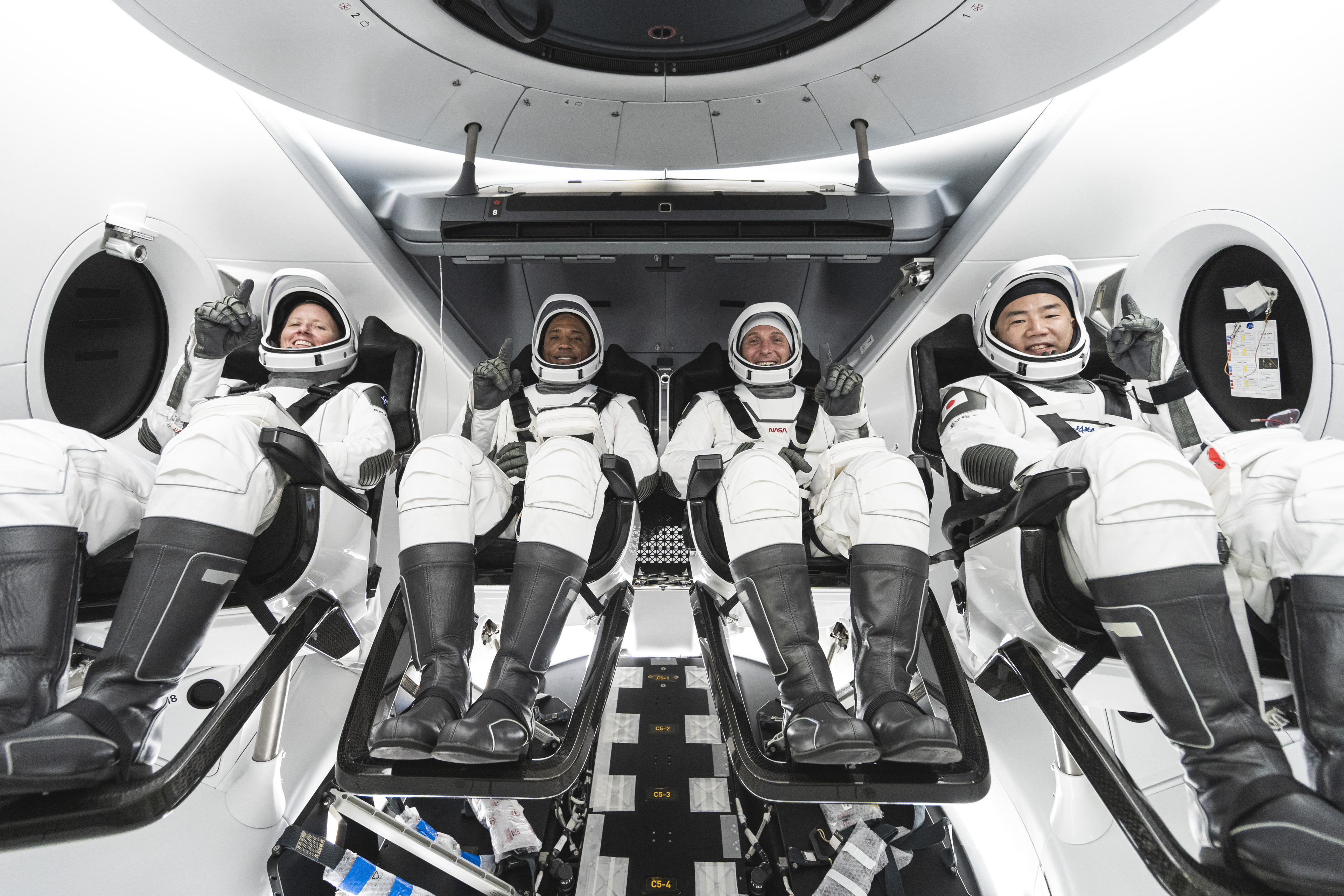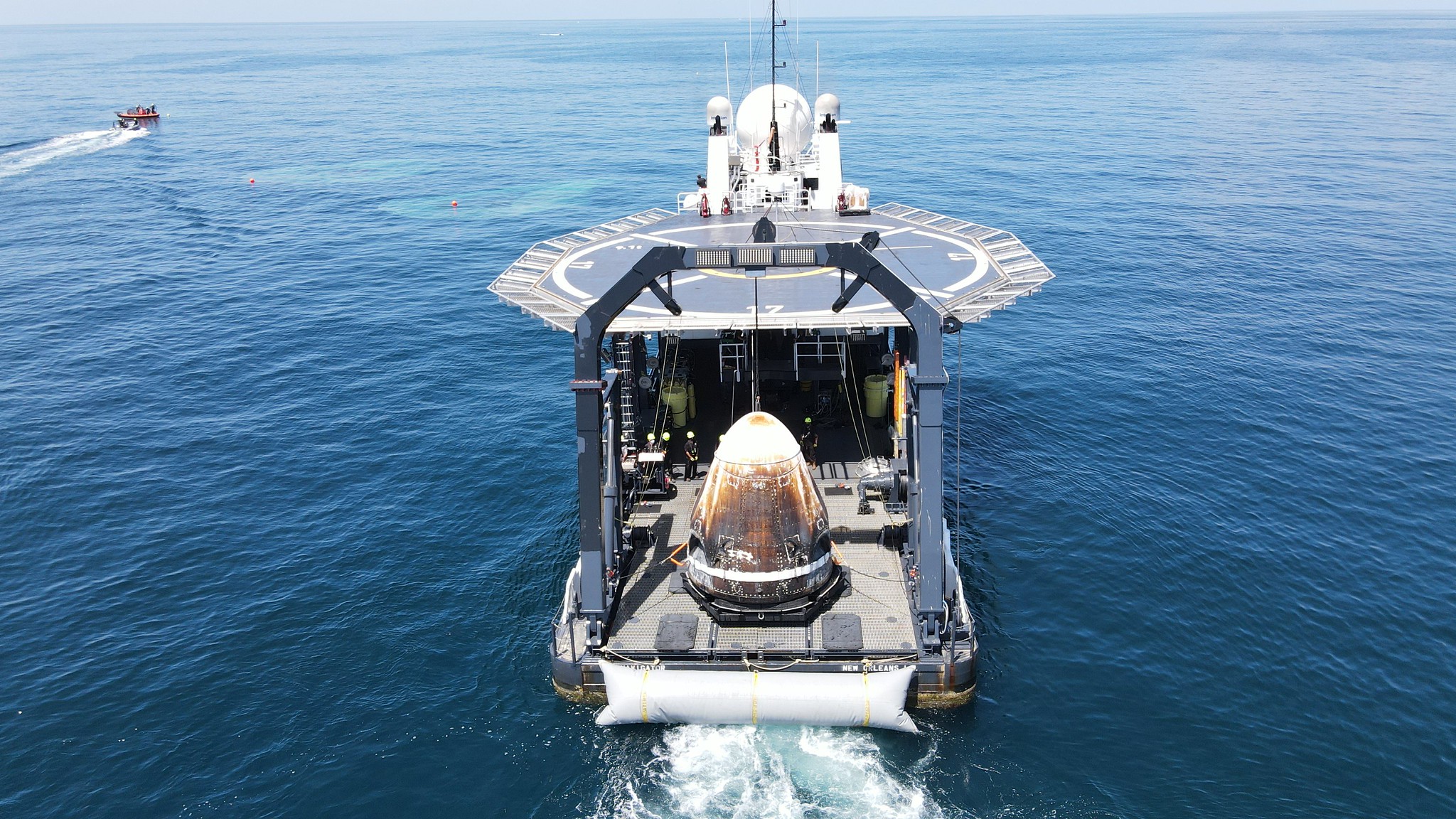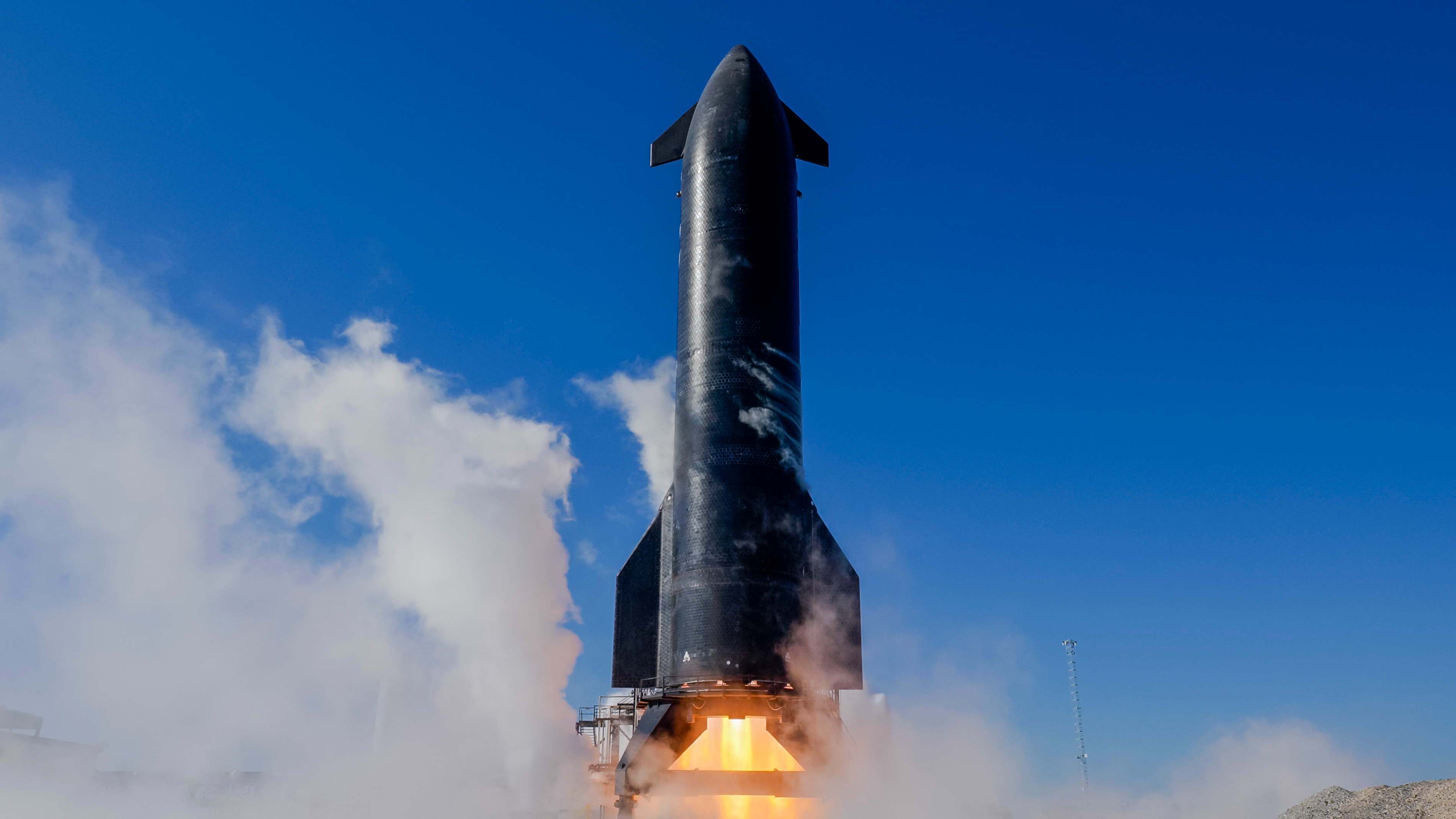SpaceX's next astronaut flight for NASA to include heat shield tweak and more
SpaceX and NASA are preparing for the first full-fledged crew flight to the International Space Station, which will look similar — but not identical — to the crewed test flight the pair ran this summer.
That test flight, dubbed Demo-2, saw veteran NASA astronauts Doug Hurley and Bob Behnken spend two months living and working in the orbiting laboratory while SpaceX and NASA confirmed that SpaceX's brand new Crew Dragon vehicle, the first new spacecraft to carry humans in decades, was functioning safely and as expected. Now, the astronauts' successors will follow on the first operational mission for the vehicle, which will send three NASA astronauts and a Japanese colleague to spend six months in orbit.
On their way up to space and back, much will look the same for the new crewmembers as it did during Demo-2, assuming everything goes smoothly. "It will be a great mission if Crew-1 goes exactly the same way," Kathy Lueders, associate administrator for human exploration and operations at NASA, said during a news conference held yesterday (Sept. 29). "I'm counting on a beautiful mission."
Related: In photos: SpaceX's historic Demo-2 test flight with astronauts

That said, the test flight wasn't just for show. Following Demo-2 and using Hurley and Behnken's experience, NASA and SpaceX have made several tweaks to the Crew-1 mission hardware and procedures. Those changes will shape both the departure and return of the new mission.
Perhaps the most dramatic difference for this flight is that SpaceX has made changes to Crew Dragon's thermal protective shield, or heat shield, based on examining the Demo-2 capsule, Hans Koenigsmann, a vice president at SpaceX, said during the news conference.
When SpaceX engineers looked over the Demo-2 capsule, they noticed more wear-and-tear in a few specific areas of the heat shield, where bolts connect the capsule to the spacecraft's trunk. They hadn't noticed the phenomenon when studying the uncrewed Crew Dragon that flew on the first test mission, dubbed Demo-1, in 2019, Koenigsmann said. He emphasized that the Demo-2 heat shield was safe for the astronauts during their reentry.
Breaking space news, the latest updates on rocket launches, skywatching events and more!
But SpaceX tested upgraded protection for these small areas in a wind tunnel at NASA's Ames Research Center in California earlier this month and both NASA and SpaceX are satisfied with the results of those experiments, Koenigsmann and Lueders said. In addition, the heat shield changes will be implemented on a cargo Dragon spacecraft that is currently scheduled to launch in November but return to Earth before Crew-1 does.

A second tweak to the spacecraft adjusted the pressure sensor that triggers the drogue parachutes to deploy during the splashdown process, Koenigsmann said. During the Demo-2 return, those parachutes unfurled at a slightly lower altitude than would have been ideal, he added, noting that the deployment was still within nominal range. This sensor adjustment should ensure an earlier, higher deployment when the Crew-1 astronauts return.
Based on Demo-2 data, the teams have also decided to slightly loosen weather restrictions for launch and splashdown, Anthony Vareha, NASA's lead flight director for Crew-1, said during a second news conference held on Tuesday. Weather scrubbed the first Demo-2 launch attempt.
And NASA and SpaceX have reached out to the U.S. Coast Guard for help enforcing a 10-mile (16 kilometers) keep-out zone around the planned splashdown area when the astronauts are scheduled to arrive, a partnership meant to avoid a repeat of the boaters who gatecrashed the Demo-2 splashdown in August.
The news conferences were held the day after NASA announced that it was delaying the launch by a week, to Oct. 31, to facilitate traffic management at the International Space Station.
The next Russian Soyuz capsule, which will carry two cosmonauts and NASA astronaut Kate Rubins, is currently scheduled to launch Oct. 14. Their predecessors, who include NASA astronaut Chris Cassidy, will return to Earth on Oct. 21 and the Crew-1 launch had previously been targeting Oct. 23 — a very tight timeline for crewed spaceflight missions.
"We will use the additional time to review … whatever we have, over and over again until we're really sure we are safe to fly," Koenigsmann said of the schedule change.
Email Meghan Bartels at mbartels@space.com or follow her on Twitter @meghanbartels. Follow us on Twitter @Spacedotcom and on Facebook.
Join our Space Forums to keep talking space on the latest missions, night sky and more! And if you have a news tip, correction or comment, let us know at: community@space.com.

Meghan is a senior writer at Space.com and has more than five years' experience as a science journalist based in New York City. She joined Space.com in July 2018, with previous writing published in outlets including Newsweek and Audubon. Meghan earned an MA in science journalism from New York University and a BA in classics from Georgetown University, and in her free time she enjoys reading and visiting museums. Follow her on Twitter at @meghanbartels.
